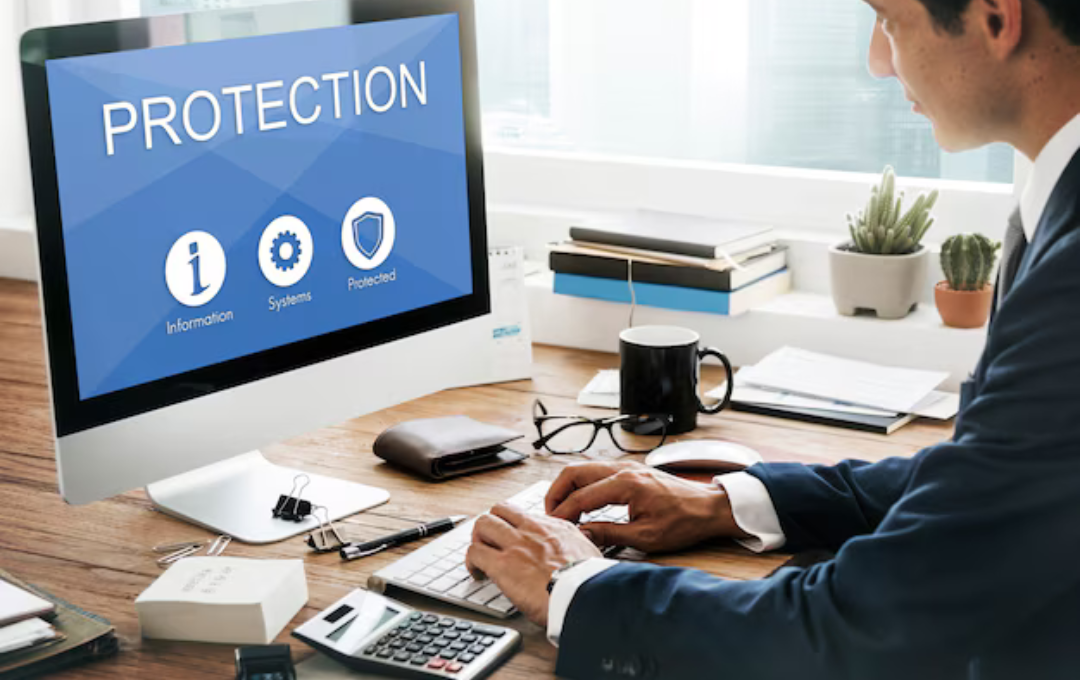How to Protect Your Data Online?
The digital world in 2025 offers endless convenience but comes with increasing risks. With cyber threats becoming more sophisticated, protecting your online data requires vigilance and a proactive approach. This comprehensive guide covers 16 actionable tips to safeguard your personal and financial information, complete with examples, step-by-step guidance, and tools to fortify your online presence.
1. Create Complex, Unique Passwords
Your passwords are your first line of defense. Weak, predictable passwords are like leaving your front door unlocked.
Why It’s Critical
Hackers often use automated tools to crack weak passwords. Using the same password across accounts makes you vulnerable.
How to Implement
- Example: Replace “John123” with “J0hN$93!oPq”.
- Use at least 12 characters, mixing uppercase, lowercase, numbers, and symbols.
- Use a password manager (e.g., LastPass, Dashlane) to generate and store unique passwords securely.
2. Enable Two-Factor Authentication (2FA)
Adding a second layer of security prevents unauthorized access even if your password is compromised.
Why It Works
2FA requires a second verification step, like a code sent to your phone, making it nearly impossible for hackers to breach your account.
Steps to Enable 2FA
- Go to your account settings (e.g., Gmail, Facebook).
- Find the “Security” section and select Two-Factor Authentication.
- Choose your method: SMS, email, or an authenticator app like Google Authenticator.
3. Use Encrypted Connections
Encryption protects your data from being intercepted during online activity.
Why It Matters
Public Wi-Fi and unsecured connections are prime targets for hackers.
How to Secure Connections
- Always use HTTPS websites (look for the padlock icon in the browser).
- Use a Virtual Private Network (VPN) like NordVPN or ExpressVPN for encryption when browsing on public Wi-Fi.
4. Keep Software Up to Date
Regular updates patch security flaws that cybercriminals exploit.
Why It’s Important
Outdated software leaves your device vulnerable to malware and ransomware.
What to Do
- Enable automatic updates for your operating system, browsers, and apps.
- Update antivirus software regularly to stay protected from the latest threats.
5. Beware of Phishing Attacks
Phishing is a common tactic used to trick you into revealing sensitive information.
How to Spot Phishing
- Example: A fake email claiming to be from “Your Bank” asks you to click a link to verify your account.
- Check the sender’s email address and avoid clicking suspicious links.
Action Plan
- Hover over links to view their destination before clicking.
- Use anti-phishing tools like Avast Browser Security.
6. Avoid Oversharing on Social Media
Social media can be a goldmine for cybercriminals.
Why It Matters
Personal details like your birthdate or location can help hackers bypass security questions.
Tips to Limit Sharing
- Example: Avoid posting “On vacation in Hawaii!” until you’re back.
- Adjust your privacy settings to restrict who can view your posts.
7. Use Secure Payment Methods
Protect your financial data by using secure payment channels.
Best Practices
- Use credit cards instead of debit cards for online purchases (credit cards offer better fraud protection).
- Consider virtual wallets like PayPal or Apple Pay.
8. Regularly Back Up Your Data
Backups protect you from data loss caused by malware or system crashes.
How to Back Up Data
- Use cloud storage services like Google Drive, OneDrive, or Dropbox.
- Keep a physical backup on an external hard drive.
- Schedule backups weekly or after critical updates.
9. Limit Permissions for Apps
Many apps collect unnecessary data, compromising your privacy.
Steps to Review Permissions
- Go to your device’s Settings > Apps > Permissions.
- Revoke permissions like location or microphone access unless essential.
- Download apps only from trusted sources like Google Play or the App Store.
10. Install Antivirus and Anti-Malware Software
Robust antivirus software is a must-have for detecting and blocking cyber threats.
Top Recommendations
- Bitdefender for real-time protection.
- Norton 360 for comprehensive security, including a VPN and dark web monitoring.
11. Be Cautious with Email Attachments
Emails with attachments can be a gateway for malware.
How to Stay Safe?
- Avoid opening attachments from unknown senders.
- Scan attachments with antivirus software before downloading.
12. Secure Your Internet of Things (IoT) Devices
Smart devices like cameras and thermostats can be hacked if left unsecured.
Steps to Secure IoT Devices
- Change the default username and password immediately after setup.
- Update device firmware regularly.
- Use a separate Wi-Fi network for IoT devices to isolate them from your primary network.
13. Log Out After Sessions
Leaving accounts logged in on shared devices can expose your data.
Why It’s Important
Anyone using the same device can access your accounts and personal information.
Best Practices
- Always log out of sensitive accounts after use.
- Use browser extensions like Auto Logout for added security.
14. Use Privacy-Focused Search Engines
Traditional search engines often track and store your data.
Recommended Search Engines
- DuckDuckGo: Does not track your searches.
- Brave: Blocks ads and protects your data while browsing.
15. Monitor Your Online Accounts Regularly
Reviewing your accounts ensures early detection of unauthorized access.
How to Monitor
- Enable notifications for account activity.
- Use services like Have I Been Pwned? to check if your data has been compromised in breaches.
16. Stay Updated on Cybersecurity Trends
Cybersecurity is an ever-evolving field. Staying informed keeps you a step ahead.
Resources to Follow
- Sign up for alerts from the Cybersecurity and Infrastructure Security Agency (CISA).
- Follow cybersecurity blogs like Krebs on Security or ThreatPost.
Summary Table: Tips at a Glance
| Tip | Why It’s Important | Action |
|---|---|---|
| Strong Passwords | Prevents easy hacking | Use a password manager for unique passwords |
| Two-Factor Authentication | Adds an extra layer of security | Enable on all critical accounts |
| Secure Websites | Protects sensitive information | Look for HTTPS and use a VPN |
| Update Software | Fixes security vulnerabilities | Turn on automatic updates |
| Back Up Data | Safeguards against ransomware and loss | Use cloud and offline storage |
Conclusion
Protecting your data online in 2025 requires a multi-layered approach. By implementing these 16 tips, you can build a strong defense against cyber threats. From using unique passwords to staying informed about emerging risks, every step plays a role in keeping your personal and financial information safe.
FAQs
1. What is the safest way to browse online?
Using a VPN and privacy-focused browsers ensures secure browsing.
2. Can free antivirus software provide adequate protection?
Some free tools offer basic protection, but premium antivirus solutions provide comprehensive security.
3. How do I know if my data has been hacked?
Check your accounts for unusual activity or use tools like “Have I Been Pwned?” to verify breaches.
4. What’s the best way to secure smart devices?
Change default credentials, update firmware, and isolate them on a separate Wi-Fi network.
5. Is public Wi-Fi safe for online banking?
Avoid public Wi-Fi for sensitive activities unless using a VPN for encryption.






